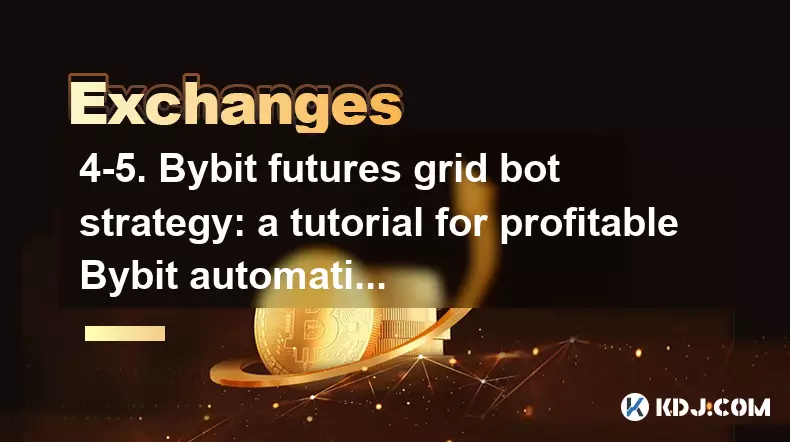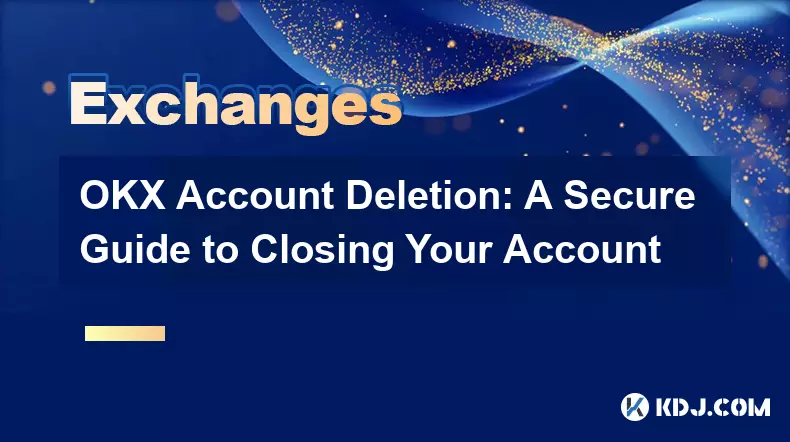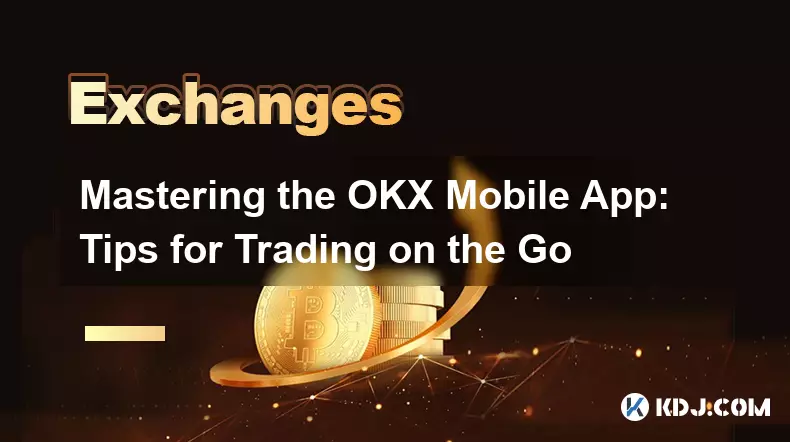-
 bitcoin
bitcoin $101752.865364 USD
-1.09% -
 ethereum
ethereum $3382.985899 USD
-1.38% -
 tether
tether $0.999658 USD
0.04% -
 xrp
xrp $2.272505 USD
-1.51% -
 bnb
bnb $989.089004 USD
0.14% -
 solana
solana $156.962612 USD
-3.08% -
 usd-coin
usd-coin $0.999776 USD
0.01% -
 tron
tron $0.290786 USD
-0.69% -
 dogecoin
dogecoin $0.174594 USD
-2.86% -
 cardano
cardano $0.560085 USD
-3.55% -
 hyperliquid
hyperliquid $40.023704 USD
-5.75% -
 chainlink
chainlink $15.324649 USD
-2.78% -
 bitcoin-cash
bitcoin-cash $493.576540 USD
-3.52% -
 zcash
zcash $571.320038 USD
-12.05% -
 stellar
stellar $0.280066 USD
-4.26%
4-5. Bybit futures grid bot strategy: a tutorial for profitable Bybit automation.
Bybit's futures grid bot automates trading by placing buy/sell orders at set price levels within a range, profiting from market volatility in sideways markets.
Oct 29, 2025 at 01:18 pm

Understanding Bybit Futures Grid Bot Mechanics
1. The Bybit futures grid bot operates by placing a series of buy and sell orders at predetermined price intervals within a specified range. This strategy capitalizes on market volatility, especially in sideways or ranging markets where prices fluctuate without a clear directional trend.
2. Traders define the upper and lower price boundaries for the grid, allowing the bot to automatically execute trades as the price moves up and down across these levels. Each time the price hits a grid level, a trade is triggered—buying low and selling high within the set parameters.
3. The grid bot uses leverage and margin settings configured by the user on Bybit’s futures platform. Proper configuration ensures that margin usage aligns with risk tolerance while maximizing potential returns from small price movements.
4. Users can choose between arithmetic and geometric grids. An arithmetic grid spaces orders evenly in price increments, while a geometric grid spaces them based on percentage differences, which may better suit assets with exponential price behavior.
5. Position sizing and the number of grid levels directly impact profitability and risk exposure. Too many grids may lead to over-trading and increased fees, while too few reduce profit opportunities during volatile swings.
Setting Up Your Grid Bot on Bybit
1. Access the trading bot feature through Bybit’s official platform or a trusted third-party automation tool compatible with Bybit API integration. Ensure your API keys are generated with only necessary permissions—avoid granting withdrawal rights.
2. Select the futures contract you want to trade, such as BTCUSD or ETHUSD perpetual contracts. Confirm the symbol, leverage, and margin mode (isolated or cross) before initiating the bot.
3. Define the price range based on technical analysis. Use support and resistance levels, moving averages, or Bollinger Bands to determine realistic upper and lower bounds where the asset is likely to oscillate.
4. Input the number of grid lines and select the grid type. For example, setting 10 grid levels between $30,000 and $32,000 on BTC/USD creates automatic entry and exit points every $200 interval if using an arithmetic setup.
5. Allocate the total investment amount across the grid. The system will distribute funds proportionally depending on the number of layers and position size per trade, ensuring consistent order execution throughout the range.
Optimizing Performance and Managing Risk
1. Monitor funding rates closely when running long-term futures grid bots. High or negative funding can erode profits over time, especially in contango-heavy markets where holding positions incurs recurring costs.
2. Use stop-loss mechanisms outside the grid range to prevent catastrophic losses if the market breaks out sharply beyond expected volatility. While grid bots thrive in range-bound conditions, they are vulnerable to strong trending moves that breach the predefined boundaries.
3. Adjust take-profit settings to lock in gains periodically, particularly in extended consolidation phases. Some advanced bots allow partial profit realization after a certain number of completed cycles.
4. Account for transaction fees and slippage, especially on lower-margin assets. Frequent trading inherent to grid strategies can accumulate significant costs, reducing net returns if not properly managed.
5. Backtest the strategy using historical data whenever possible. Evaluate performance across different market regimes—ranging, bullish, and bearish—to understand how the bot behaves under stress and adjust parameters accordingly.
Common Pitfalls and How to Avoid Them
1. Over-leveraging is one of the most common mistakes. High leverage amplifies both gains and losses, and in a grid strategy, liquidation risk increases if the price moves rapidly past the grid zone.
2. Ignoring market context leads to poor parameter selection. Deploying a wide grid during low-volatility periods may result in few executions, while narrow grids in high-volatility environments trigger frequent trades with minimal profit margins.
3. Failing to update grid parameters in response to macroeconomic events or major technical breakouts can leave the bot exposed to adverse price action. Regular monitoring and manual intervention remain essential even in automated setups.
4. Relying solely on default settings without understanding the underlying logic often results in suboptimal performance. Customization based on asset behavior and personal risk appetite is crucial for sustained success.
5. Neglecting API security practices jeopardizes account safety. Always use IP whitelisting, enable two-factor authentication, and rotate API keys regularly to minimize unauthorized access risks.
Frequently Asked Questions
What happens if the price moves outside the grid range?If the price breaches the upper or lower limit of the grid, no further trades will be executed until it re-enters the range. This can lead to missed opportunities or stranded positions, so some traders implement breakout alerts or dynamic rebalancing rules.
Can I run multiple grid bots simultaneously on Bybit?Yes, you can deploy several grid bots across different symbols or timeframes. However, ensure your total portfolio risk remains within acceptable limits and that each bot is tailored to the specific volatility profile of its target asset.
How does funding rate affect my futures grid bot?Since futures contracts require periodic funding payments, being on the wrong side of the rate (e.g., long when funding is highly positive) can reduce profitability. Short-term grids may mitigate this, but longer-running bots should factor in cumulative funding costs.
Is grid trading suitable for all cryptocurrencies?No. Assets with stable ranges and consistent volatility, like major coins (BTC, ETH), perform better. Low-liquidity altcoins often exhibit erratic price jumps, making them unsuitable for static grid configurations due to high slippage and unpredictable movement.
Disclaimer:info@kdj.com
The information provided is not trading advice. kdj.com does not assume any responsibility for any investments made based on the information provided in this article. Cryptocurrencies are highly volatile and it is highly recommended that you invest with caution after thorough research!
If you believe that the content used on this website infringes your copyright, please contact us immediately (info@kdj.com) and we will delete it promptly.
- Ripple (XRP) in 2026: Hold or Fold? A Look at XRP's Future and Emerging DeFi Alternatives
- 2025-11-08 18:35:01
- Zcash ZEC Coin Price Explosion: From Privacy Niche to Center Stage
- 2025-11-08 18:55:01
- Berachain Price Prediction: Navigating the Honeycomb Hype in Crypto
- 2025-11-08 18:55:01
- Arthur Hayes, Gold, and Bitcoin: A Modern Monetary Trinity?
- 2025-11-08 19:15:01
- Shiba Inu's Next Move: Navigating a Shifting Market
- 2025-11-08 19:20:01
- Pakistan's Crypto Crossroads: Balancing Opportunity with Asset-Backed Realities
- 2025-11-08 19:20:01
Related knowledge

Common Mistakes to Avoid on OKX: A Guide for New Traders
Nov 04,2025 at 03:37pm
Understanding the Interface Before Trading1. New traders often jump into placing orders without fully exploring the OKX platform layout. Taking time t...

OKX TradingView Integration: A Guide to Advanced Chart Analysis
Nov 02,2025 at 03:37am
OKX and TradingView: Bridging the Gap for Professional Traders1. OKX, one of the leading cryptocurrency exchanges, has integrated with TradingView to ...

Finding Your OKX Deposit Address: A Quick and Safe Guide
Nov 05,2025 at 01:15pm
Finding Your OKX Deposit Address: A Step-by-Step Process1. Log into your OKX account using your registered credentials. Ensure you are accessing the o...

OKX Savings Guide: A Low-Risk Strategy for Earning Crypto
Nov 05,2025 at 06:55am
Understanding OKX Savings and Its Role in Crypto Earnings1. OKX Savings offers users a straightforward method to earn passive income by leveraging idl...

OKX Account Deletion: A Secure Guide to Closing Your Account
Nov 05,2025 at 08:44am
Understanding the Implications of Account Closure1. Closing your OKX account permanently removes access to all associated trading features, including ...

Mastering the OKX Mobile App: Tips for Trading on the Go
Nov 05,2025 at 01:19am
Streamlined Navigation for Efficient Trading1. The OKX mobile app features a clean and intuitive interface that allows traders to access key functions...

Common Mistakes to Avoid on OKX: A Guide for New Traders
Nov 04,2025 at 03:37pm
Understanding the Interface Before Trading1. New traders often jump into placing orders without fully exploring the OKX platform layout. Taking time t...

OKX TradingView Integration: A Guide to Advanced Chart Analysis
Nov 02,2025 at 03:37am
OKX and TradingView: Bridging the Gap for Professional Traders1. OKX, one of the leading cryptocurrency exchanges, has integrated with TradingView to ...

Finding Your OKX Deposit Address: A Quick and Safe Guide
Nov 05,2025 at 01:15pm
Finding Your OKX Deposit Address: A Step-by-Step Process1. Log into your OKX account using your registered credentials. Ensure you are accessing the o...

OKX Savings Guide: A Low-Risk Strategy for Earning Crypto
Nov 05,2025 at 06:55am
Understanding OKX Savings and Its Role in Crypto Earnings1. OKX Savings offers users a straightforward method to earn passive income by leveraging idl...

OKX Account Deletion: A Secure Guide to Closing Your Account
Nov 05,2025 at 08:44am
Understanding the Implications of Account Closure1. Closing your OKX account permanently removes access to all associated trading features, including ...

Mastering the OKX Mobile App: Tips for Trading on the Go
Nov 05,2025 at 01:19am
Streamlined Navigation for Efficient Trading1. The OKX mobile app features a clean and intuitive interface that allows traders to access key functions...
See all articles





















![The Graph Price Prediction [GRT Crypto Price News Today] The Graph Price Prediction [GRT Crypto Price News Today]](/uploads/2025/11/07/cryptocurrencies-news/videos/690d4df44fe69_image_500_375.webp)




















































